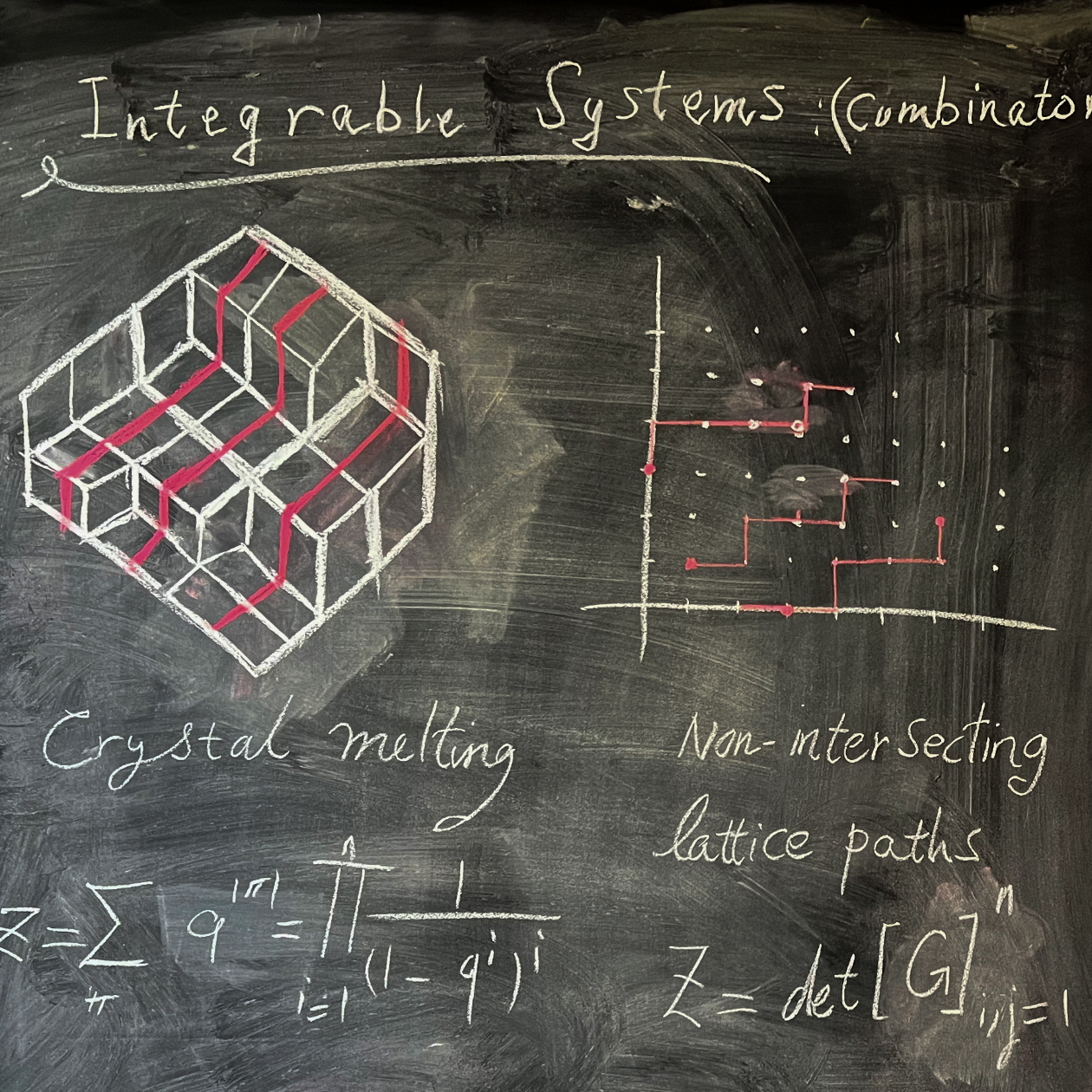Stone on stone
In our updated landing page, we let our blackboards do the talking: each blackboard illustrates a key concept from one of our best papers.
What’s the oldest technology still in common use? Arguably, it’s writing on a blackboard. The process involves using one stone—white chalk—to make erasable marks on another—black slate. While the technology is probably prehistoric, the Persian scholar Al-Biruni describes Indian school children using blackboards as far back as the 11th century.
Whenever two or more theorists want to understand something new, their medium of choice is the blackboard. Why? One reason is that ordinary handwriting is too small for multiple people to see and interact with, so it helps to see the problem writ large. Another is that anything that’s written is meant to be erased, so blackboards encourage speculative thought. Another is their organic nature: stone on stone writing is inherently imperfect. After it’s erased, the board retains a trace of it of what was there before. “In many ways, mathematics is like craftsmanship. In some ways, it’s like artistry; in some ways, it’s like science. But there’s a real high craft side to giving a beautiful lecture on a blackboard,” says Prof. David Eisenbud, a mathematician at Berkeley.















